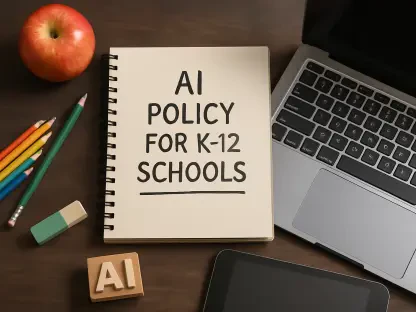In a decisive move to safeguard financial stability, the Raymond School District in Racine County, Wisconsin, has captured attention with a strategic financial decision that underscores its commitment to operational continuity. During a significant board meeting held on August 18, the district approved a substantial $1.2 million line of credit with Community State Bank, designed to address short-term operational costs during the early months of the school year when expenses often outstrip incoming revenue. This action is not merely a reaction to immediate needs but a forward-thinking approach to ensure liquidity without placing undue strain on the district’s resources. It highlights a broader trend among educational institutions to prioritize cash flow management, especially in periods of fiscal uncertainty. As school districts across the nation grapple with balancing budgets, this development offers a glimpse into how proactive planning can mitigate financial pressures while maintaining focus on educational priorities.
Financial Maneuvers for Stability
The authorization of a $1.2 million line of credit stands as a testament to the district’s prudent financial strategy, providing a buffer without an immediate obligation to borrow. Superintendent Michael Leach and Business Manager Jeff Genovese emphasized that this measure serves as a safety net, with funds only drawn when necessary, thereby avoiding interest costs until absolutely required. Governed by Wisconsin state statutes, which limit borrowing to half of estimated annual receipts and mandate repayment by November 1 of the following fiscal year, this approach ensures strict adherence to fiscal responsibility. The flexibility offered by this line of credit allows the district to cover critical expenses such as payroll and utilities during lean revenue months, reflecting a calculated effort to maintain smooth operations without risking overextension. This careful balance between preparedness and restraint sets a notable example for other districts facing similar cash flow challenges in the educational sector.
Beyond the line of credit, the district’s financial health shows encouraging progress, with a reported cash balance of $616,000 in July after necessary adjustments. This figure marks a significant improvement compared to the same period in the prior year, a fact that board member Keith Kastenson highlighted as a source of confidence in the district’s direction. Detailed financial reporting, including the meticulous tracking of revenues and expenses for specific programs like school musicals in dedicated funds, underscores a commitment to transparency that benefits both administrators and stakeholders. Such practices ensure that every dollar is accounted for, providing a clear picture of fiscal standing and fostering trust among community members who rely on the district to manage public funds effectively. This strengthened cash position, paired with rigorous oversight, positions the district to navigate future uncertainties with greater assurance and accountability.
Engaging the Community on Budget Priorities
Community involvement emerged as a cornerstone of the recent board meeting, with residents actively voicing concerns about how financial decisions impact local education. Dorrae Moonan, a local stakeholder, raised pointed questions regarding the food service consortium agreement managed by Yorkville under an Alternate Food Service Authority Agreement, seeking clarity on its oversight and funding mechanisms. The district responded by explaining that this arrangement, signed by the superintendent, does not require annual board approval, thereby streamlining operations while maintaining established protocols. This exchange exemplifies the district’s willingness to engage in open dialogue, addressing public inquiries with factual responses to build understanding. By prioritizing such transparency, the district not only acknowledges community interest but also reinforces its accountability in managing resources that directly affect students and families.
Another focal point of community discussion was the integration of innovative tools like the Data Wrangler system, designed to monitor energy usage in the district’s kitchen facilities. Funded through the general budget rather than consortium resources, this initiative reflects a commitment to operational efficiency, with monthly reports providing actionable insights. Superintendent Leach noted early positive feedback on the system’s performance, while board member Ed Robinson suggested that future data analysis could lead to adjustments if inefficiencies are identified. This proactive stance on adopting technology, balanced with a readiness to reassess based on evidence, demonstrates a nuanced approach to expenditure justification. Community members, through such discussions, gain insight into how investments in innovation aim to yield long-term savings and improvements, ensuring that financial decisions align with both immediate needs and sustainable goals.
Planning Ahead for Fiscal Health
Looking toward the future, the district has outlined a clear path for ongoing financial oversight, with plans to reevaluate borrowing authority during the tax levy setting in October, as mandated by state regulations. Business Manager Jeff Genovese will maintain close monitoring of cash flow projections to ensure that the district remains on stable footing throughout the fiscal year. This systematic approach to financial planning, grounded in regular assessments and adherence to legal frameworks, aims to prevent unexpected shortfalls while preserving the ability to respond to emerging needs. The emphasis on forward-looking strategies, supported by a healthier fund balance, signals a trajectory of cautious optimism. It suggests that the district is not only addressing current demands but also preparing for potential challenges, ensuring that educational services continue uninterrupted.
Reflecting on the steps taken, the district’s actions during the August 18 meeting laid a strong foundation for sustained financial health, with the approved line of credit serving as a critical tool for flexibility. The improved cash reserves and detailed reporting mechanisms adopted at that time provided a clearer view of fiscal status, fostering confidence among board members and the public alike. As a next step, continued engagement with community stakeholders will be vital to maintain trust and transparency, especially as new initiatives are evaluated for their cost-effectiveness. Additionally, leveraging data from systems like Data Wrangler could inform future budget adjustments, optimizing resource allocation. These efforts, initiated in the past, set the stage for a resilient financial framework, encouraging other districts to consider similar proactive measures in their planning processes to safeguard educational quality.









